
Cubes, Tetrahedrons, and Wind Chimes by Andi Q. '25
Silly lil musical instruments for a silly lil guy (me)
“Everyday objects suggest amusing controllers” – Perry Cook
This semester, I’m taking 21M.370 – Digital Instrument Design! It’s a new(ish) music technology class about using microcontrollers (Arduinos, ESP32, etc.) and various sensors (accelerometers, capacitive sensing, etc.) to create fun new interfaces for musical expression.
Professor Ian Hattwick encourages us to go wild with our imaginations, as long as the end product produces some kind of audio01 For our first assignment, I made a synthesizer patch that emulated an ambulance siren during a rainy day, and he loved it . Bonus points if it sounds or looks good too02 Sounding good is subjective anyway ! So here are a few silly instruments I’ve designed throughout the semester (although I haven’t had the chance to build most of them… yet).
Tetrahedron
I think we can all agree that the triangle is the pinnacle of acoustic musical instrument design. It’s hard to imagine improving such a flawless design, but with the power of hot glue, it is indeed possible!
Tetrahedron is an instrument made of four triangles glued together:
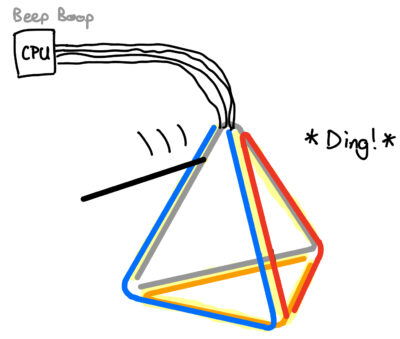
Behold.
Although the glue would dampen the triangles’ acoustics, Tetrahedron would account for this by using a microcontroller to amplify the sound, much like an electric guitar.
But why stop there? Icosahedron is an instrument made of twenty triangles glued together:
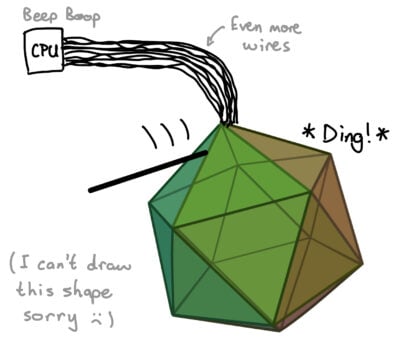
Behold (x5).
Five times the triangles, five times the music.
Rockin’ in the Wind
Do you ever hear wind chimes gently jingling in a calm breeze and wish they’d sound more like plates breaking or a metal pipe hitting the ground?
Rockin’ in the Wind is a set of electric wind chimes that makes that wish a reality. When two chimes collide, they complete an electrical circuit, which a microcontroller can detect and trigger sound effects to play.
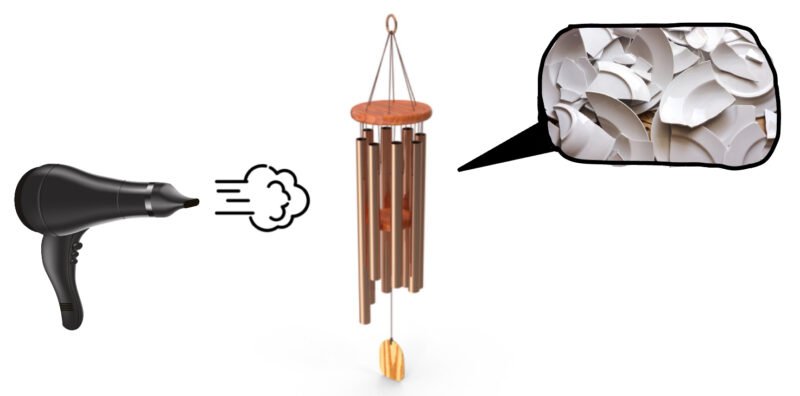
Bonus points if you use a hairdryer to play the instrument!
If you prefer less chaos, Rockin’ in the Wind can also play regular musical notes. These notes are tuned to a pentatonic scale, so it always magically sounds good. And thanks to the microcontroller, these notes can sound like any instrument, from the kettledrums to Vocaloid.
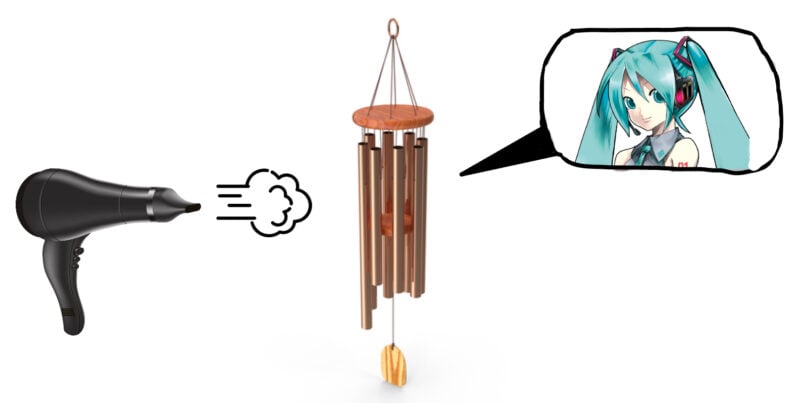
HuMIDIfier
We often use piano keyboards as MIDI controllers in electronic music because they’re familiar and easy to use. But plain old keyboards are so boring!
HuMIDIfier turns the human body into a MIDI controller, using an accelerometer to detect steps on a virtual piano keyboard. Kind of like the foot pedals on a pipe organ.

The inspiration behind HuMIDIfier
HuMIDIfier is extra chaotic because you can’t actually see the piano keys when you’re using it, but that’s the fun of this instrument.
Music Cube
MIT’s new music building is best described as three featureless brown cubes. (I suggested painting them bright pink like the Teatro Amazonas in Brazil, but the music department wasn’t having it.)
In honor of this new building, Music Cube is also a featureless brown cube, made of six copper squares hot glued together, with wires poking out the sides.
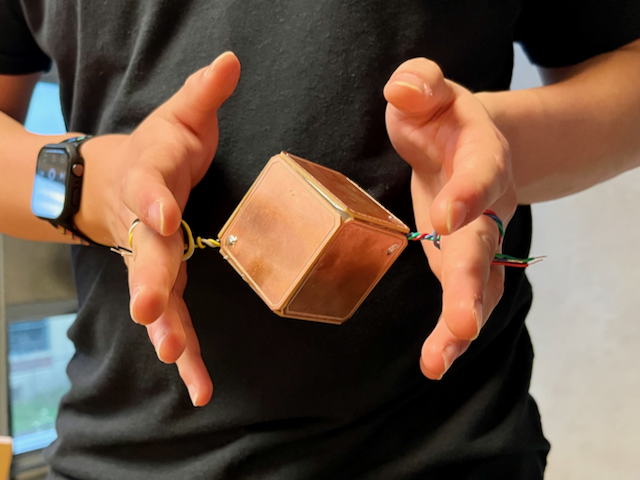
C U B E
Using these wires, you can suspend the cube between your hands. Each face on the cube then acts as a button that plays a sound when touched.
Music Cube is one of the few instruments on this list that I actually ended up building. And surprisingly, playing it felt quite natural! I performed Saint-Saëns’ The Swan on it as a nod to the very first lecture, where Ian showed us a performance of the piece on the theremin.
There’s also a secret fifth instrument that I’m using as a final project in a different class. That one deserves its own post when it’s ready, so stay tuned for that!
- For our first assignment, I made a synthesizer patch that emulated an ambulance siren during a rainy day, and he loved it back to text ↑
- Sounding good is subjective anyway back to text ↑

